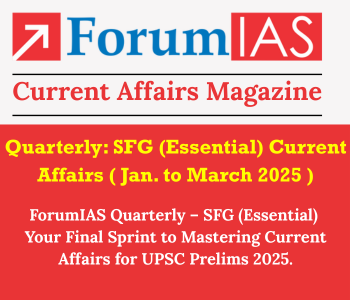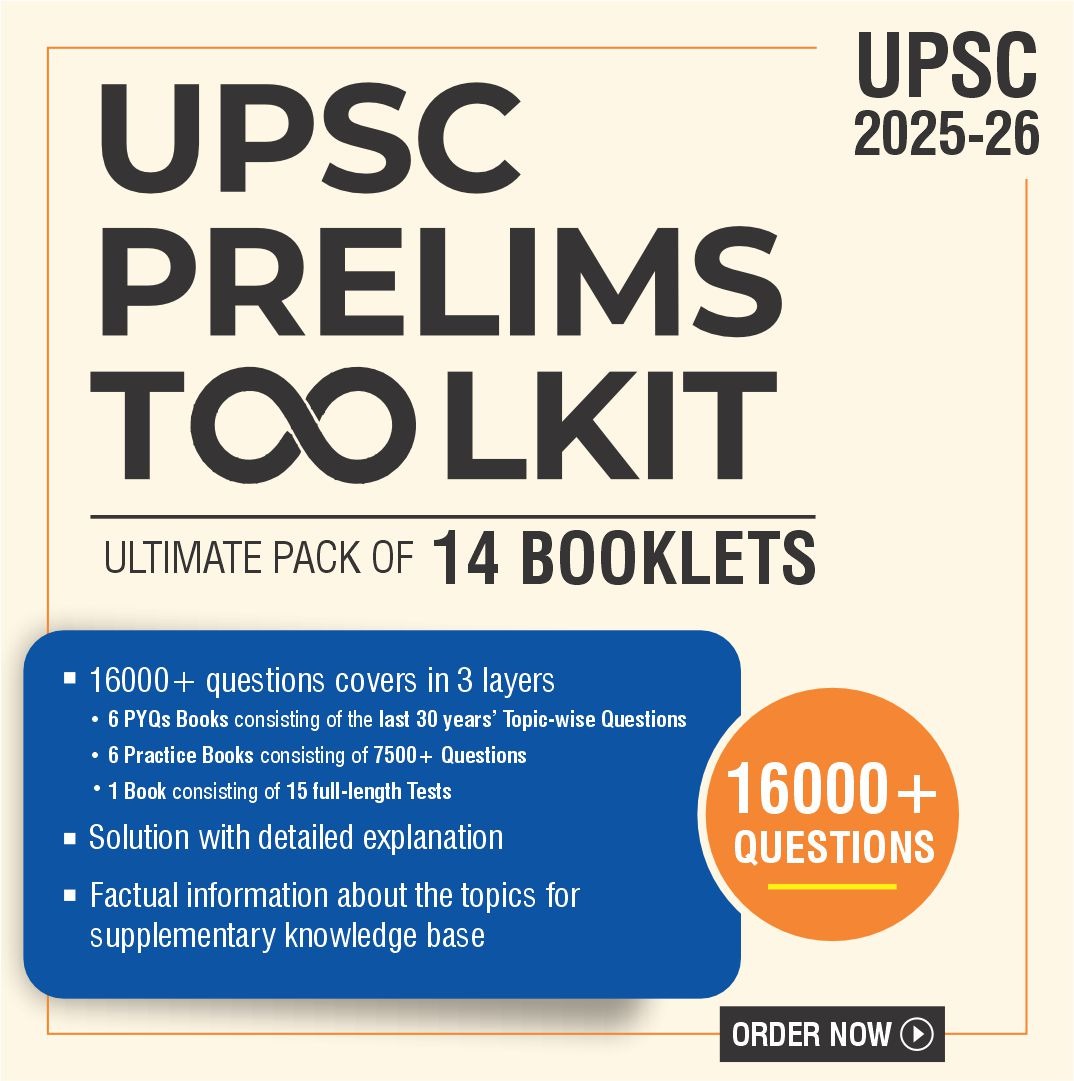Good evening dear reader.
Here is our 9pm current affairs brief for you today
About 9 PM Brief- With the 9 PM Daily Current affairs for UPSC brief we intend to simplify the newspaper reading experience. In 9PM briefs, we provide our reader with a summary of all the important articles and editorials from three important newspapers namely The Hindu, Indian Express, and Livemint. This will provide you with analysis, broad coverage, and factual information from a Mains examination point of view.
About Factly- The Factly initiative covers all the daily news articles regarding Preliminary examination. This will be provided at the end of the 9 PM Brief.
Dear Aspirants,
We know for a fact that learning without evaluation is a wasted effort. Therefore, we request you to please go through both our initiatives i.e 9PM Briefs and Factly, then evaluate yourself through the 10PM Current Affairs Quiz.
We plan to integrate all our free daily initiatives to comprehensively support your success journey.
Happy Learning!
9 PM for Mains examination
GS-1
- A case for older women
GS-2
- Changing Health Behaviour
- QUAD Grouping- India, Japan, US and Australia
- Need of a Maritime strategy
9 PM for Preliminary examination
FACTLy
1. A case for older women
Source: The Hindu
Syllabus: GS-1- Society
Context: Welfare of elderly women.
How elderly women are a vulnerable category of people?
- Elderly women in a majority of Asia-Pacific countries are facing major challenges due to a change from traditional to nuclear family-oriented patterns which are far more fluid, split structures.
- Lack of adequate support: Many older women, with a higher tendency to live alone, face poverty and are more likely to lack family and other socioeconomic support.
- Access to a caregiver: The majority of older people do not have reliable and sustained access to a caregiver and many have slid into poverty during the pandemic.
What are the plans in place for the elderly?
- There is a need for better policies, more resilient social systems and gender equality in order to improve the lives of elderly women.
- 2002 Madrid International Plan of Action on Ageing: This agreement mentions the development of evidence-based policies that help create “a society for all ages”.
- Programme of Action of the International Conference on Population and Development (ICPD) and the 2030 Agenda for Sustainable Development Goals underscore the basis of this approach to healthy ageing.
- The United Nations Population Fund (UNFPA): It is committed to helping governments in full partnership with civil society and communities.
- UNFPA incorporates the need to enable and strengthen the self-reliance of older persons.
Way forward
- In order to transform the challenge of population ageing into an opportunity, we must collectively prioritise greater action, funding and implementation.
- Address the complex demographic shift of population ageing, with strategic solutions:
- A life cycle approach to healthy ageing, with particular emphasis on girls and women, firmly grounded in gender equality and human rights is required.
2. Changing Health Behaviour
Source- The Hindu
Syllabus- GS 2- Welfare schemes for vulnerable sections of the population by the Centre and States and the performance of these schemes; mechanisms, laws, institutions and Bodies constituted for the protection and betterment of these vulnerable sections.
Context- The role of health behaviour in public health practice needs special attention during an epidemic.
What are the skills required from public health professionals during an epidemic?
- Social Groups- To identify the social groups which can be at greater risk to disease at any given point of time.
- General Population- To pick up those who are at risk from a general population, even before they know that they are at risk.
- Awareness of the people- To know whether any group is at risk or not is possible only if people have a deep understanding of the society.
- Reliance on Laboratory’s test-
- The overreliance on laboratory tests not only means that people lose the opportunity to detect those who are possibly at high risk of transmission but also the opportunity to look for high risk behaviour among people.
- Control on spread of disease- The primary purpose of public health action during an epidemic is to prevent the spread of a disease in the community.
Who is more successful in controlling the epidemic- science or people?
Success in controlling the epidemic- The fact that if there is success in controlling an epidemic, the credit goes to science and institutions and the government.
Failure in controlling the epidemic–
- If there is a failure to control the epidemic, the blame is placed on the people.
- There is a failure to understand that health behaviour is only a subset of human behaviour and is closely linked to a person’s living and working conditions.
- Behavioural change takes place when society is organised in such a way that there is no option to engage in risky/ unhealthy behaviour by virtue of one’s occupation or social position.
Which means are the governments using to ensure that people follow certain health behaviour?
- Disease control models- They focus on modifying individual risk factors. The role of public health in this case gets largely confined to ‘preaching’ with very little scope for action. Such as Epidemic Diseases Act of 1897.
- The police-
- The second approach has been to create fear of punishment as the basis of behavioural change.
- The police are given the responsibility to fine people when they violate rules.
- This has serious ethical implications, especially for those who cannot afford certain health behavioural practices.
Way Forward
Health behaviour plays a critical role in deciding the success of any public health intervention. The real change in health behaviour is possible only when there is acknowledgement of its societal roots and there are efforts to alter it at multiple levels. Instead of putting the onus of changing or modifying health behaviour onto individuals will only result in ‘victim blaming’ and create distrust between people and those responsible for epidemic control.
3. QUAD Grouping- India, Japan, US and Australia
Source – The Hindu
Syllabus – GS 2- Bilateral, regional and global groupings and agreements involving India and/or affecting India’s interests.
Context – 2nd ministerial meeting of the QUAD is going to be held in Japan.
What is QUAD grouping?
- The quadrilateral formation includes– Japan, India, United States and Australia.
- Purpose– All four nations find a common ground of being the democratic nations and common interests of unhindered maritime trade and security.
- Formed– The idea was first mooted by Japanese Prime Minister Shinzo Abe in 2007. However, the idea couldn’t move ahead with Australia pulling out of it.
What are China’s views on the Quad?
Asian version of NATO-The strategic community in China has branded it an emerging “Asian NATO-North Atlantic Treaty Organization”.
China’s shrillness
China was hoping that its naval build-up might slip under the radar because the Americans were distracted by continental challenges including Russia, Afghanistan and Iran, and would not look sea-ward.
Nine dash line– Once the idea of Quad 1.0 had died down, China stakes claim to 90% of the South China Sea, and this claim is based on the U-shaped nine-dash line etched on map in the 1940s by a Chinese geographer.
China’s global naval strategy and expansion-
China undertook the rapid kind of warship building activity reminiscent of Wilhelmine Germany before 1914.
China built its first overseas base in Djibouti.
Started systematically to explore the surface and sub-surface environment in the Indian Ocean beyond the Malacca Straits
Beijing rejects tribunal’s ruling– China’s dismissal of the Arbitral Award in the dispute with the Philippines on the South China Sea.
Ruling-There was no legal basis for China to claim historic rights to resources within the sea areas falling within “nine-dash line”
- China violated its obligations to refrain from aggravating or extending the parties disputes during the pendency of the settlement process
What is the significance of QUAD 2.0
China’s brazen militarization of the islands after its President had publicly pronounced to the contrary has once again brought the four countries onto the same page and given a second chance to the Quad.
Plurilateral mechanism –
U.S.-India Strategic Partnership Forum (USISPF) also suggested that other countries might be invited to join in the future. This too is welcome; India has many other partners in the Indo-Pacific.
A positive agenda built around collective action in humanitarian assistance and disaster relief, monitoring shipping for search and rescue or anti-piracy operations, infrastructure assistance to climatically vulnerable states, connectivity initiatives and similar activities, will re-assure the littoral States that the Quad will be a factor for regional benefit, and a far cry from Chinese allegations that it is some sort of a military alliance.
Way forward
The forthcoming Ministerial meeting will be an opportunity to define the idea and chart a future path. Needless provocation of China should be avoided. The Quad nations need to better explain that the Indo-Pacific Vision is an overarching framework that is being discussed in a transparent manner, with the objective of advancing everyone’s economic and security interests.
4. Need of a Maritime strategy
Source: The Hindu
Syllabus: GS-2-International relations
Context: India’s obsession with continental strategies has produced unfavourable results and it’s time to shift focus to the maritime strategy.
What is the state of continental strategy?
- Current state: Border stalemate with China and Beijing doesn’t seem keen on reinstating the status quo with India as of March 2020.
- Aksai Chin: China is pushing back New Delhi’s claims with its slow but aggressive implementation.
- Ceasefire violations with Pakistan on the Line of Control (LoC) have spiked since last year as has the infiltration of terrorists across the LoC.
- India-Pakistan contestation over Kashmir has become fiercer with the change of the status of Jammu and Kashmir (J&K) by New Delhi in 2019, and Pakistan altering its political map a few months ago to include all of J&K.
- China-Pakistan axis: There is a geopolitical conspiracy between Islamabad and Beijing to contain and pressure New Delhi from both sides.
What are the changes in Afghanistan?
- The ongoing withdrawal of the United States from Afghanistan and the return of the Taliban. India has very little contact with Taliban which could turn the geopolitical tide against New Delhi.
- With the withdrawal of forces of the North Atlantic Treaty Organization from Afghanistan, the geopolitical interests of Pakistan, China and Russia would broadly converge in the region.
- India’s ‘Mission Central Asia’: The change of the geopolitical landscape in Afghanistan and the frictions in Iran-India relations will further dampen the mission.
What should India do?
- Creatively deal with its continental dilemmas:
- India would need to deal with pressure from the Pakistan front by addressing the Kashmir question with Islamabad.
- Activating existing mechanisms such as the Director-General of Military Operations (DGMO) hotline.
Read also:- Daily Current Affair
What is Maritime strategy?
- India should shift its focus from the continental sphere to the maritime sphere.
- The Ministry of External Affairs (MEA) established a new division to deal with the Indo-Pacific in April 2019 and it needs to be fast-tracked to keep pace with the evolving realities.
State the reasons why a maritime grand strategy would work to India’s advantage?
- The maritime sphere is wide open to India to undertake coalition building, rule setting, and other forms of strategic exploration.
- Arrival of the concept of ‘Indo-Pacific’: Great powers remain interested in the maritime sphere and this interest has grown significantly since the arrival of Indo-Pacific.
- Germany recently released its Indo-Pacific guidelines after France brought out its Indo-Pacific strategy last year.
- Beijing’s bullying behaviour in the South China Sea: This has generated a great deal of willingness among the Euro-American powers and the countries of the region, including Australia and Japan, to push back Chinese unilateralism.
- The maritime space is more important to China: The massive Chinese trade that happens via the Oceanic routes and India’s maritime strategy can potentially disrupt that trade.
Way forward
- The MEA’s Indo-Pacific Division is a good beginning; so is the decision in 2019 to elevate the Quad meetings among India, Japan, the United States and Australia to the ministerial level.
- India should join its military and non-military tools, engage its strategic partners, and publish a comprehensive vision document on the Indo-Pacific.
9 PM for Preliminary examination
Click on “Factly articles for 1st October 2020”
https://factly.forumias.com/factly-articles-for-1st-october-2020/
Discover more from Free UPSC IAS Preparation Syllabus and Materials For Aspirants
Subscribe to get the latest posts sent to your email.







